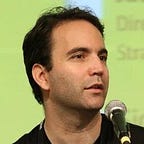Gardens of Eden
Since John Horton Conway passed a few days ago now might be a good time to write up my thoughts on gardens of eden in his life automata.
I’ve spent some time manually trying to find simple gardens of eden patterns and failed miserably, to the point where it seems like Life is designed not to make for interesting patterns but to make it difficult to find gardens of eden. Clearly they must be there because so many patterns crowd out or starve and result in an empty grid, but crowded and sparse patterns can easily emanate out of middling populations, so the terminal of winding up going backwards steps has no obvious place other than being vaguely somewhere in the middle.
This seems to be emblematic of a broader trend: Interesting physics is the ones which are almost but not quite time reversible. Our own universe follows rules which are very much of that vein. Many of Stephen Wolfram’s automata which are interesting seem to have this property, and several of the ones which look interesting but it’s hard to find any logic gates in seem to be completely time reversible, or nearly so with some constant factor gotchas.
To quantify this, let’s think in terms of the probability that a given randomly generated region is not a garden of eden in particular cellular automata rules. This will go down exponentially as the size of the region increases, with the exponential base roughly meaning the probability of each individual cell causing the whole pattern to be a garden of eden. My guess is that the most interesting patterns occur when that value is as small as possible but not zero. How to even approximate it for Conway’s Life is highly unclear, but a straightforward computational approach should be able to approximate it for Wolfram’s automata.
Given that rule 110 is the Wolfram automata in which we know how to build computers, I’m going to go out on a limb and conjecture that of all the Wolfram automata, that’s the one whose base of its eden exponent is as small as possible without actually being zero.
